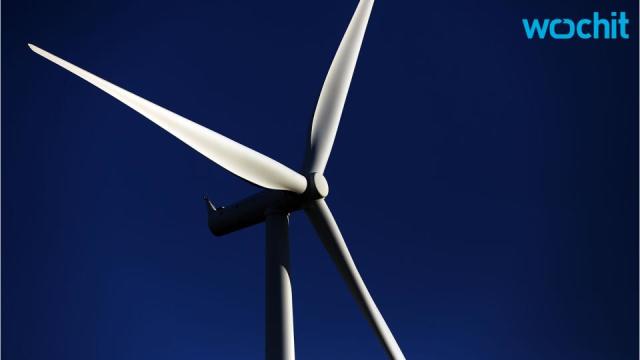Sounds odd, but if the process could produce energy to any level, without pollutants or toxins let's look into it.
Mud: The world’s next power source?
Anmar Frangoul
For most of us, mud is nothing more than the sludge that ruins our carpets, clothes and shoes. For one California company, however, it could be a revolutionary source of sustainable energy.
MudWatt has built a device designed to harness the energy released by mud-based microbes. "The MudWatt is based on microbial fuel cell technology," Keegan Cooke, MudWatt's Executive Director, told CNBC over email.
"It converts chemical energy found in the sugars and nutrients into electrical energy, and it uses special electric bacteria to drive that reaction," he added. "We don't supply any bacteria in the kit – the bacteria are already in the dirt around you."
MudWatt has built a device designed to harness the energy released by mud-based microbes. "The MudWatt is based on microbial fuel cell technology," Keegan Cooke, MudWatt's Executive Director, told CNBC over email.
"It converts chemical energy found in the sugars and nutrients into electrical energy, and it uses special electric bacteria to drive that reaction," he added. "We don't supply any bacteria in the kit – the bacteria are already in the dirt around you."
According to the MudWatt website, the device uses graphite electrodes, with the anode located in the microbe rich mud, and the cathode placed on top, exposed to oxygen. The microbes consume nutrients within the mud, and then, "deposit electrons onto the anode."
Read MoreBean there: Could soy and canola save the planet?
The electrons then travel through wire and become power. The electrons are able to move back down the wire to the cathode, interacting with oxygen and protons, creating water.
Currently used in locations including schools, homes and colleges, Cooke said that the MudWatt can power everything from sensor packages to small electronics like digital clocks, thermometers and buzzers.
The company is committed to broadening access to sustainable technology and informing the public on how it works, and according to Cooke, around 7,000 MudWatt kits have been sold. A MudWatt Classic Kit, which contains everything needed to get started, costs just under $40.
Cooke said the most power that has ever been produced by a MudWatt is around 500 microwatts, "Which an 8th grader achieved using their local river mud. You'd still need 20,000 MudWatts to light a house LED light bulb, but 500 microWatts can still be used for lot of things, like powering small electronics."
As Cooke said, "you won't be seeing any MudWatt-powered cars anytime soon," but there is potential for this kind of technology to be used on a larger scale, such as in wastewater treatment plants.
"Instead of wastewater treatment plants consuming a bunch of energy… they could become energy producers, putting power back into the grid and becoming part of a broader portfolio of renewable energy technologies," Cooke said.
Read MoreHas the Holy Grail of clean energy been found?
The sustainability of the device and technology is another advantage – no pollutants or toxins are produced during the process, according to Cooke, who also said that new packaging for the device will be made from a paper pulp that can be used by the MudWatt as fuel.
"Nothing gets used up or corroded, and so the system lasts forever, as long as you give it new nutrients, which are a renewable resource," he said.
Read MoreBean there: Could soy and canola save the planet?
The electrons then travel through wire and become power. The electrons are able to move back down the wire to the cathode, interacting with oxygen and protons, creating water.
Currently used in locations including schools, homes and colleges, Cooke said that the MudWatt can power everything from sensor packages to small electronics like digital clocks, thermometers and buzzers.
The company is committed to broadening access to sustainable technology and informing the public on how it works, and according to Cooke, around 7,000 MudWatt kits have been sold. A MudWatt Classic Kit, which contains everything needed to get started, costs just under $40.
Cooke said the most power that has ever been produced by a MudWatt is around 500 microwatts, "Which an 8th grader achieved using their local river mud. You'd still need 20,000 MudWatts to light a house LED light bulb, but 500 microWatts can still be used for lot of things, like powering small electronics."
As Cooke said, "you won't be seeing any MudWatt-powered cars anytime soon," but there is potential for this kind of technology to be used on a larger scale, such as in wastewater treatment plants.
"Instead of wastewater treatment plants consuming a bunch of energy… they could become energy producers, putting power back into the grid and becoming part of a broader portfolio of renewable energy technologies," Cooke said.
Read MoreHas the Holy Grail of clean energy been found?
The sustainability of the device and technology is another advantage – no pollutants or toxins are produced during the process, according to Cooke, who also said that new packaging for the device will be made from a paper pulp that can be used by the MudWatt as fuel.
"Nothing gets used up or corroded, and so the system lasts forever, as long as you give it new nutrients, which are a renewable resource," he said.





